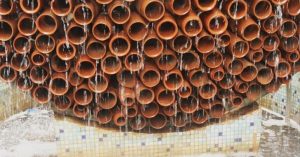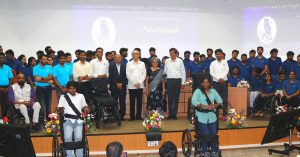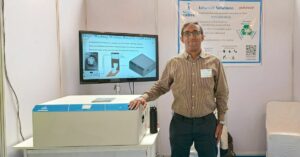IIT-M Gives Free 3D-Printed Face Implants To Poor Patients Disfigured by Black Fungus
A collaboration between IIT Madras and Chennai-based startup ZorioX Innovation Labs, the #Right2Face initiative aims to help poor patients with face implants developed using indigenous 3D-printing technology.
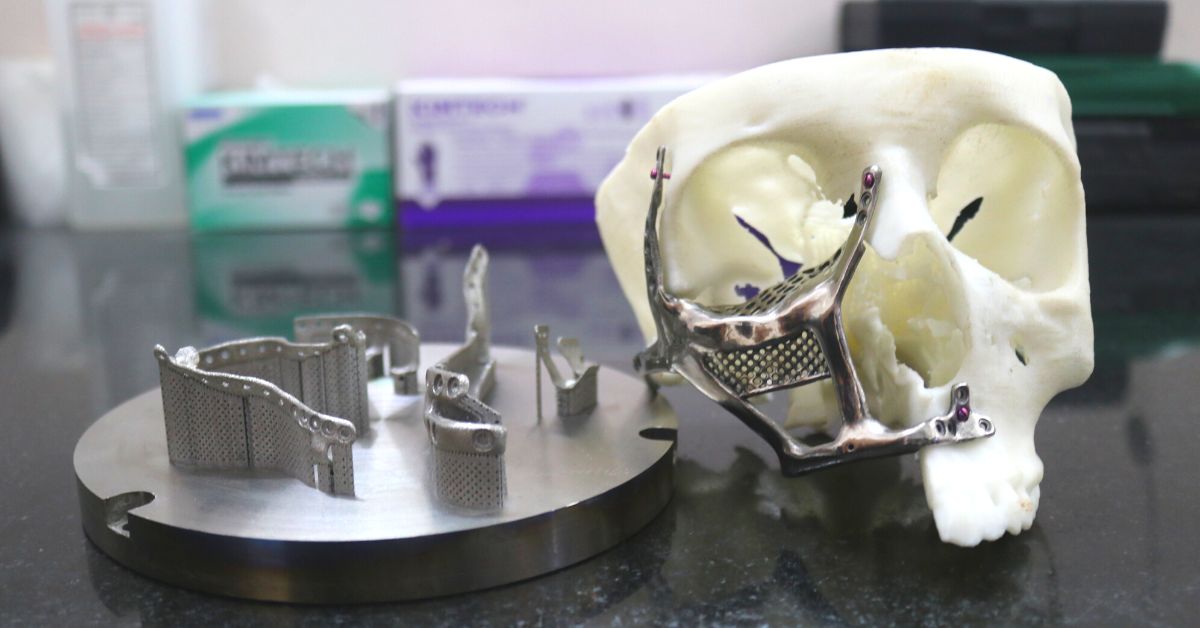
In a heartening development, researchers at the Indian Institute of Technology, Madras (IIT-M), have developed 3D-printed face implants for patients suffering from Mucormycosis, a rare but deadly infection also known as Black Fungus.
This infection has been reported in patients suffering from uncontrolled diabetes, HIV/AIDS, and other medical conditions up to the very recent COVID-19.
According to this description in the Journal of Pure and Applied Microbiology, “In 1885, the German pathologist Paltauf, reported the first case of Mucormycosis and described it as Mycosis Mucorina. During [the] 1980s and 1990s Mucormycosis was increasingly seen among immunocompromised individuals.” The term Mucormycosis, however, was first coined by American pathologist RD Baker in the 1950s.
The team at IIT-M has joined hands with ZorioX Innovation Labs, a Chennai-based medical equipment manufacturing startup, to organise around 65 implants for patients from economically-weaker sections. This initiative is based on metal 3D printing or additive manufacturing.
The Better India sits down with the minds behind this thoughtful venture to understand its scope in depth.
Dangers of the deadly black fungus
According to an August 2023 paper published in the Journal of Medical Mycology by Gregoire Pasquier, “Mucormycosis is a rare opportunistic infection caused by a filamentous fungus belonging to the Mucorales order…The diagnosis is difficult and consequently, it is often delayed, resulting in high lethality despite appropriate antifungal and surgical treatment.”
In India, the second wave of the COVID-19 pandemic in 2021 led to an upsurge in mucormycosis cases known as Covid-19-associated mucormycosis or CAM.
“Indian media, based on statements by members of the Indian government, reported 11,717 CAM cases on May 25, 28,252 CAM cases on June 7, 45,274 CAM cases (including 4332 deaths) on July 20, and 51,775 CAM cases on November 29, 2021,” notes Pasquier.
“These precise data were available because on May 20, 2021, mucormycosis became a notifiable disease under the Epidemic Diseases Act 1897. Before this epidemic, mucormycosis was considered a rare opportunistic infection,” he adds.
A particularly devastating effect of this disease is the loss of facial features which can have a debilitating effect on a patient’s mental health. The fungus responsible for mucormycosis can invade the tissues of the face, causing necrosis and disfigurement. In severe cases, patients can lose their eyes, nose, or even their entire face. The loss of these vital organs can seriously impact a patient’s ability to perform basic functions like breathing, eating, and communicating.
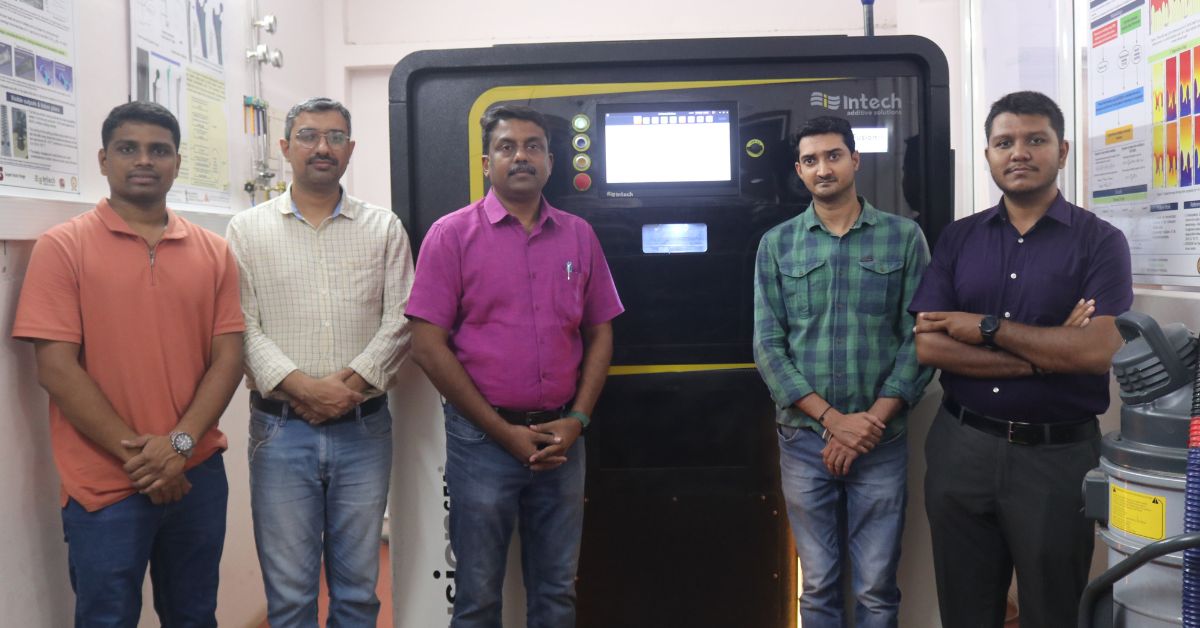
Solutions found in 3D implants
One viable solution is reconstructive surgery for patients who have lost their facial features due to this debilitating disease. As a detailed press release issued by IIT-M last month states,
“These procedures involve the reconstruction of the nose, eyes, and other facial structures using a variety of techniques, such as skin grafts, tissue expansion, and microvascular surgery.”
“These procedures can help restore the patient’s appearance and function, allowing them to lead a more normal life. However, patient-specific implants and procedures are expensive, rendering them inaccessible for people from weaker sections,” the release adds.
Speaking to The Better India, Dr Karthik Balaji, a maxillofacial surgeon and CEO of ZorioX recalls, “In college, I delved into exploring advanced techniques for replacing facial structures. Witnessing the complexities and limitations of existing methods fueled my determination to find a more efficient and patient-friendly approach.”
He continues, “The integration of 3D printing technology emerged as a promising solution, offering precise and customised implants that streamline the reconstruction process, reduce surgical time, and alleviate the need for multiple procedures.”
Explaining the process, he says, “In conventional reconstructive surgery, we take bones from legs, hips, or ribs and reconstruct the face. This has to be followed by a microvascular surgery which can take as long as 18 hours. To fix these bones, we use a plate that is going inside the body. As a medical researcher, I was working on finding ways to develop a plate in the shape of the facial bone, fix the problem, and avoid microvascular surgery, thus reducing the time taken for surgery.”
Thankfully, 3D-printing technology came to be. With the introduction of 3D-printing technology, Dr Balaji claims that they have reduced surgical time from 18 hours to 2 hours.
“We don’t use bones from another part of the body now. Instead, we will use this titanium 3D-printed implant which is biocompatible. Unlike conventional reconstructive surgery, which allows patients to eat only two years after, followed by another surgery; in employing 3D-printed implants, we only need one surgery and the patient can eat within a month. In other words, these 3D-printed implants allow patients to return to normal life a lot sooner,” he explains.
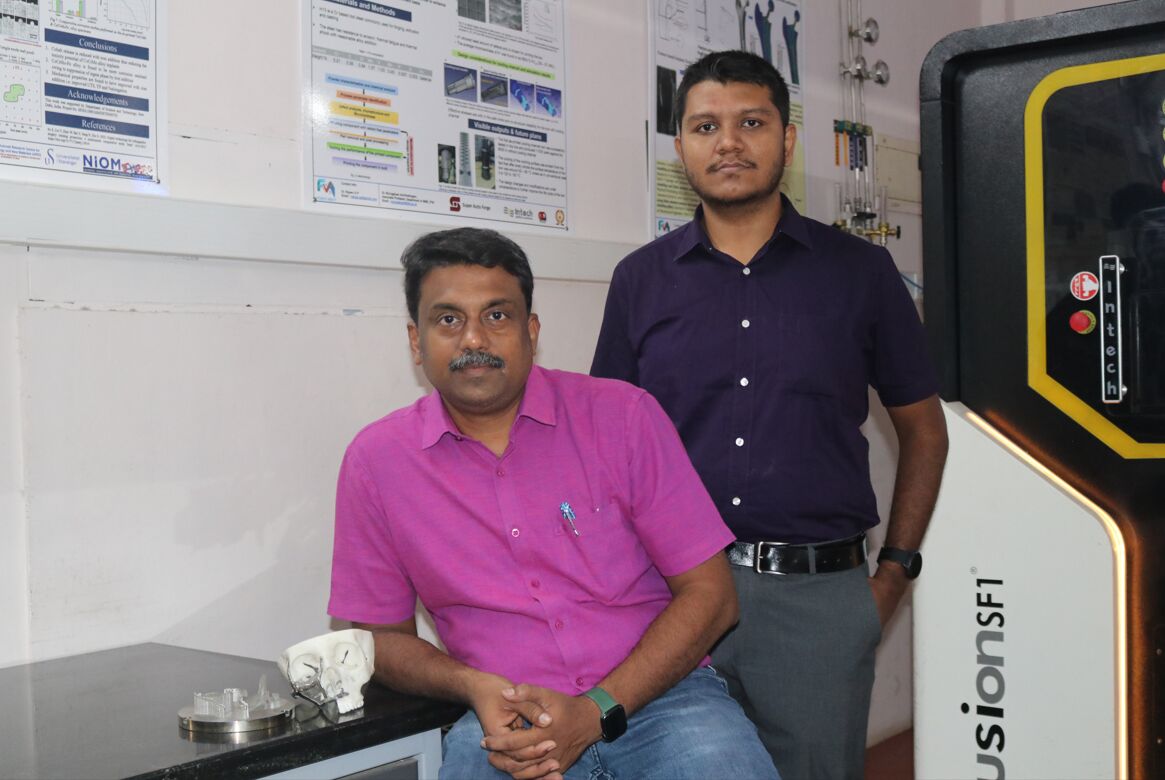
The key differences between conventional reconstructive surgery and employing IIT-M’s 3D-printed customised implants lie in precision, efficiency, and the overall patient experience.
Dr Balaji explains, “In conventional reconstructive surgery, the process often starts from surgical removal of facial bones and reconstruction of those defects with the use of bone grafting techniques; this adds complexity to the procedure and is highly technique-sensitive. Over these grafts, conventionally made implants must be placed and that incurs additional burden to the patient barring the procedure.”
Dr Murugaiyan Amirthalingam, associate professor at the Department of Metallurgical and Materials Engineering, IIT-Madras explains, “On the contrary, our 3D-printed custom implants offer a more tailored and precise solution. The implants are created based on detailed scans of the patient’s anatomy ensuring an exact fit, post-removal of facial bones. This level of customisation not only enhances the aesthetic outcome but also contributes to a more efficient surgical process. The use of 3D printing technology allows for intricate designs that match the patient’s unique facial features, resulting in improved functionality.”
As Dr Amirthalingam goes on to explain, “The motivation behind developing 3D-printed face implants stemmed from the challenges faced in conventional techniques of facial reconstruction. We have developed a methodology for the use of 3D printing to design and manufacture unique custom-designed components for various biomedical and engineering applications. When the COVID-19 pandemic arose and the number of black fungus cases increased, surgeons approached us with possible solutions to develop patient-specific implants using 3D printing. We could immediately help them as the technology was already developed in our lab.”
When Dr Balaji and his colleagues started these procedures initially, they had to import the [3D-printed] implants from the Netherlands or the United States. “The cost of a single implant was around Rs 24 lakh. Working with various engineering institutions, we developed the requisite facilities and software to develop these implants, and IIT-Madras began helping us manufacture them. After bringing all the necessary facilities to India, the cost of the implant fell from Rs 24 lakh to Rs 8 lakh,” he says.
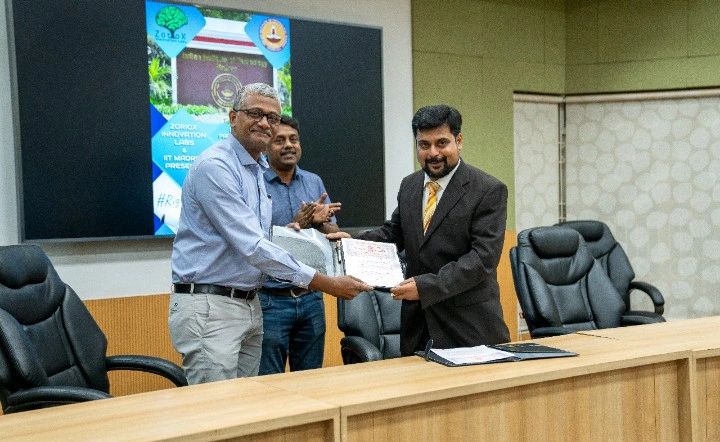
How does it work?
Dr Amirthalingam says, “Using unique in-house algorithms, a patient’s MRI/CT data is converted to printable CAD (computer-aided design) format, and custom implants are printed from medical-grade titanium using an indigenously-built laser powder bed facility in IIT-M. Extensive research activities are already being carried out in IIT Madras to commercialise this technology for printing patient-specific implants in stainless steel, Ti-6Al-4V, and Co-Cr-Mo alloys.”
Interestingly, the IIT-Madras team can print the implant exactly to match the patient’s face.
“What sets our approach apart is the ability to custom-design and print implants that precisely match a patient’s unique facial anatomy. Traditionally, reconstructive surgeons rely on pre-fabricated implants, which are akin to off-the-rack clothing. They might fit somewhat, but rarely perfectly, and also require additional alterations to patients’ bone structures. 3D printing allows us to become bespoke craftsmen, crafting implants that are the exact size and shape of the missing facial bone. We use CT scans or MRIs of the patient directly to create a detailed 3D digital model of the patient’s face. Think of it as a high-resolution picture, but instead of just depth, it captures the intricate contours and internal structures of the missing bone,” he says.
Next comes the magic of CAD. “Our skilled research scholars and Zoriox team take the medical image data and, using specialised algorithms, transform it into a digital blueprint for the implant. This blueprint, called a CAD STL (stereolithography) file, essentially tells the 3D printer exactly how to build the implant, layer by layer, mimicking the patient’s unique facial features,” he says.
“Once the CAD STL file is ready, the 3D printer takes centre stage. Imagine a high-tech sculpting machine that uses medical-grade titanium powder to meticulously build the implant, following the precise instructions in the CAD STL file. Layer by layer, the missing bone structure comes to life, perfectly customised for the patient,” he adds.
A significant hurdle was the initial capital expenditure cost associated with acquiring and implementing 3D printing technology. Another challenge involved ensuring a reliable supply of titanium, the chosen material for the implants. Most medical grade 3D-printable titanium powders were imported which increased the cost of the implants manyfold.
“We had then collaborated with an Indian supplier to help produce medical-grade titanium powders. Extensive testing was carried out in our lab to qualify the raw material produced by the Indian vendor for medical implant production,” explains Dr Amirthalingam.
“Subsequently, careful resource planning helped secure a consistent procurement of high-quality, biocompatible titanium suitable for facial implants. Establishing accurate parameters for 3D printing was a crucial step in achieving the desired precision. Our team of experts in additive manufacturing fine-tuned the printing parameters, ensuring that the implants met stringent quality standards and conformed precisely to the patient’s anatomy,” he adds.
But as Dr Balaji explains, “No project like this is complete without the invaluable input of the surgeons. Their extensive experience and meticulous feedback guided every step of the process, from initial design to post-operative care. This synergistic collaboration between engineers, designers, and surgeons was the cornerstone of our success.”
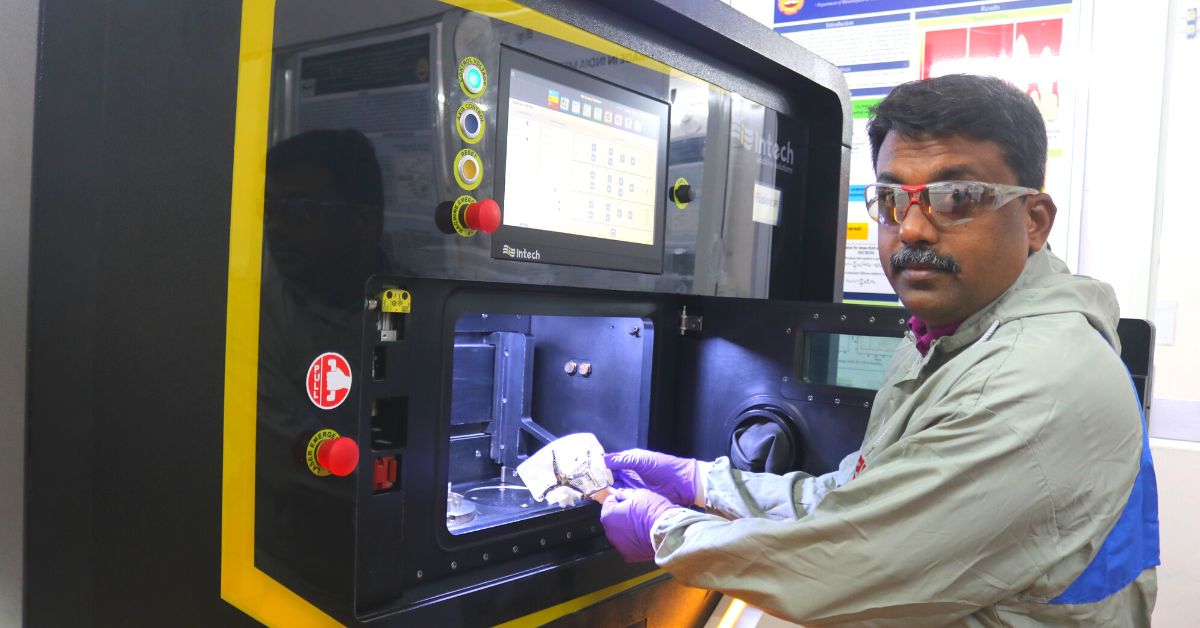
#Right2Face Initiative
Dr Amirthalingam, says, “Our collaboration with Zoriox began in 2021, driven by a shared vision to revolutionise maxillofacial [relating to jaws and face] implants through 3D printing technology.”
As he explains, “Initially, our efforts focused on addressing key technical challenges associated with these novel implants namely:
- Surface finish: Optimising the implant surface to promote tissue integration and minimise bacterial adhesion.
- Machinability: Streamlining the manufacturing process for improved efficiency and cost reduction.
- Osseointegration: Enhancing bone ingrowth and long-term implant stability.”
Through collaborative research and development, they have made significant progress in these areas, paving the way for more reliable and functional 3D-printed implants.
As their technical advancements matured, the focus shifted to broader societal impact. In 2023, the effort blossomed into the Right2Face movement, driven by the following objectives:
- Raising awareness: Educating the public and medical community about the transformative potential of 3D-printed maxillofacial implants.
- Standards development: Contributing to the establishment of robust quality and safety standards for these innovative implants.
- Material exploration: Researching and developing new biocompatible materials that further enhance implant performance and affordability.
- Improved surgical outcomes: Collaborating with surgeons to refine surgical techniques and optimise patient outcomes with 3D-printed implants.
To save the lives of a patient, a lot of facial bones had to be removed. These patients are mostly breadwinners of the family and are now confined within four walls because of their facial deformity. The #Right2face movement is aimed to help these needy patients in association with oral and maxillofacial surgeons to restore their faces and “give them back their smile”.
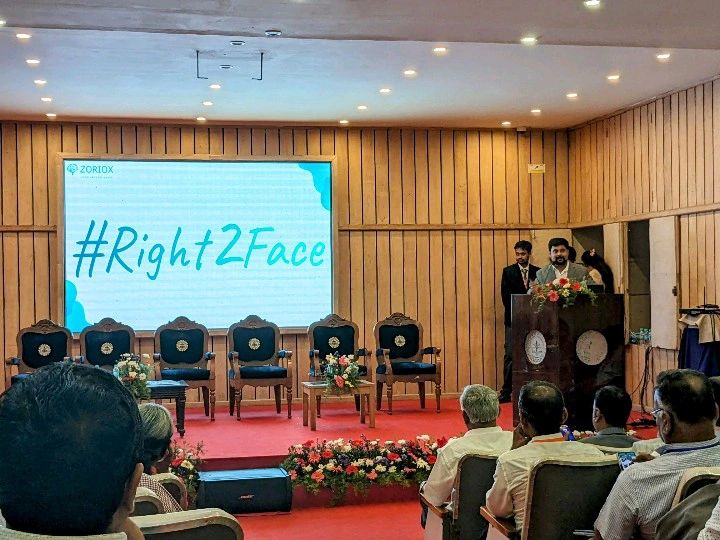
According to the press release, “IIT Madras researchers are also identifying patients who cannot afford costly imported implants and giving these implants free of cost under the campaign called #Right2Face.”
This campaign was started by a group of maxillofacial surgeons including Dr Balaji last year. This group began by working with dental colleges where maxillofacial surgeries were done. They started working with state-funded dental colleges in Chennai, Cuddalore, and other such colleges in Tamil Nadu and Telangana where they would find patients from economically weaker sections who needed these implants.
“IIT-Madras also came to help us with this initiative. We also worked with local nonprofits to raise some funds for these cases. It began with two or three cases and then IIT-Madras came in to help us with the implants. Before these procedures, we conduct one-on-one interviews with these patients, following which we obtain a letter from their doctors saying that they cannot afford these procedures and need help. After this letter, we check the ration card of the patient (if it’s available) to check their credibility and then we proceed with the implants,” says Dr Balaji.
“As a commercial entity, we have completed almost 450 implants. Under #Right2Face where patients could not afford these procedures, we have done 47 cases and in about 18 cases or so patients were able to shell out some money but not enough to cover the procedure. Medical colleges are also helping us in waiving costs for patients,” he adds.
One such beneficiary of this initiative is a 63-year-old vegetable vendor from Coimbatore who wishes to remain anonymous. Living with a wife and four daughters, things were okay till the first lockdown. Making matters worse, he tested positive for COVID-19 and was infected by black fungus.
“After the lockdown, I was affected by black fungus because of which doctors had to remove my upper jaw. Wanting to resume work after the lockdown, I heard about facial reconstruction surgery and a doctor in Madurai who could perform it. When I reached Madurai, I approached Dr S Suraj (a maxillofacial surgeon) for help,” he recalls.
Dr Suraj then referred his case to the Zoriox team, and both sides agreed on developing 3D-printed patient-specific face implants.
“It [the procedure] was expensive, and I couldn’t afford it. But under this [#Right2Face] initiative, they supplied the implant to me [free of cost]. Dr Suraj did the surgery, placed the implant inside, and reconstructed my upper jaw, and I got my denture within one month. Now, I can eat properly and carry on with my everyday routine. I’d like to sincerely thank Dr Suraj, Zoriox, and IIT-Madras for helping me, ” he adds.
Looking ahead, they are planning to help as many as patients who require these face implants.
“Official data shows at least 60,000 people are suffering from post-black fungus facial deformities. We are approaching various corporations for CSR (Corporate Social Responsibility) funding and reaching out to other funding bodies. So far, we could manage using the existing funding from IIT Madras and CSR in-kind contributions from the hospitals. However, through The Better India, we are reaching out to your readers to support us,” says Dr Balaji.
(Edited by Padmashree Pande; Images courtesy IIT-Madras and Dr Karthik Balaji/LinkedIn)
(If you want to contribute to this initiative, please click here.)
If you found our stories insightful, informative, or even just enjoyable, we invite you to consider making a voluntary payment to support the work we do at The Better India. Your contribution helps us continue producing quality content that educates, inspires, and drives positive change. Choose one of the payment options below for your contribution- By paying for the stories you value, you directly contribute to sustaining our efforts focused on making a difference in the world. Together, let’s ensure that impactful stories continue to be told and shared, enriching lives and communities alike. Thank you for your support. Here are some frequently asked questions you might find helpful to know why you are contributing?

This story made me
- 97
- 121
- 89
- 167





